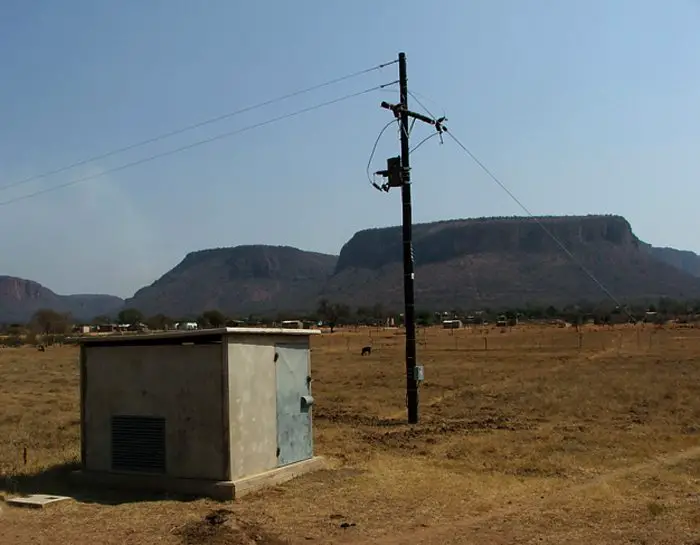The Mogalakwena Electrification project was an initiative to build an electricity infrastructure in the Limpopo municipality of Mogalakwena. The project’s ultimate goal was to electrify further stretches to a number of nearby villages. The R20 million electrification project gave permanent and dependable electricity access to more than 1 450 homes.
In order to address the backlog of electricity infrastructure in several of the villages within the municipal area, the Mogalakwena Municipality hired the international engineering consultancy firm SMEC to handle the project’s design and execution. The project was awarded to SMEC because of the company’s extensive industry knowledge and high regard for the caliber of its work.
Reported on 3rd October 2014
Over 1 450 houses in South Africa to get electricity connection

More than 1 450 houses will be provided with permanent and reliable access to electricity, as part of the R20-million Mogalakwena Electrification Project that is currently taking place in Limpopo.
The Mogalakwena Municipality is currently facing a backlog of electricity infrastructure in several of the villages within the municipal area and has appointed global engineering consultancy firm SMEC to handle the design and implementation of the project, which aims to electrify extensions to several villages in the region.
SMEC South Africa power transmission and distribution section manager, Jerome Schroeder, reveals that there is a need for the municipality to increase its service capabilities, particularly with regard to electricity, as many areas do not have access to power.
“SMEC SA was chosen for this project due to the company’s vast experience in this field and the renowned quality of its work. There are certain techniques that we have had to implement around the integration of the design, as well as the use of several innovative solutions. In implementing the design of the Mogalakwena Electrification Project, we have had to ensure that all work carried out fits within the overall project framework,” he explains.
Read Also: Kingfisher Development Area (KFDA) project in Uganda
The Mogalakwena Electrification Project, still in its design and early development phases, is approximately 50 percent complete and is due for full completion in March 2015. According to Schroeder, there have been several challenges facing this project.
“These challenges included historic problems with service delivery, where it had slowed down or been perceived by the communities as insufficient to their needs. This was overcome by involving the necessary officials and representatives from the municipality to address and resolve the matter,” he continues.
The remote location of the villages has been another challenge. “The areas where the work is being carried out are difficult to get to as they are very remote and isolated in some cases. The Waterberg area is beautiful but getting to some villages was difficult. We have addressed this issue, and the project is running smoothly,” adds Schroeder.
There is a five-man team currently working on the project, with one of the members focused solely on the application of the software designs. Schroeder observes that there are at present no SMEC employees on site, however, there will be training carried out by SMEC. “We will be in charge of most of the site control during the course of the project. Once the project has been completed, Eskom will be responsible for the operation and maintenance of the facilities.”
Schroeder states that although SMEC is in charge of the project, there is dependence on ESKOM in the provision of bulk capacity and approval for energizing. “Contractors have not yet been appointed, but they will form a vital part of the project team. The Mogalakwena Electrification Project is on track to finish on time and within budget,” he concludes.
Australian-based SMEC has more than 4 000 employees and an established network of over 60 offices worldwide. SMEC provides consultancy services for the lifecycle of a project to a broad range of sectors, which include; hydropower, transport, water, natural resources and environment, geotechnical, mining, tunneling, urban development, renewable energy, power, government and advisory services, and social infrastructure development.
Following the Vela VKE merger, the SMEC Group now has over 6 000 employees and an established network of over 70 offices in 36 countries throughout Australia, Africa, Asia, the Middle East, the Pacific, North, and South America.
